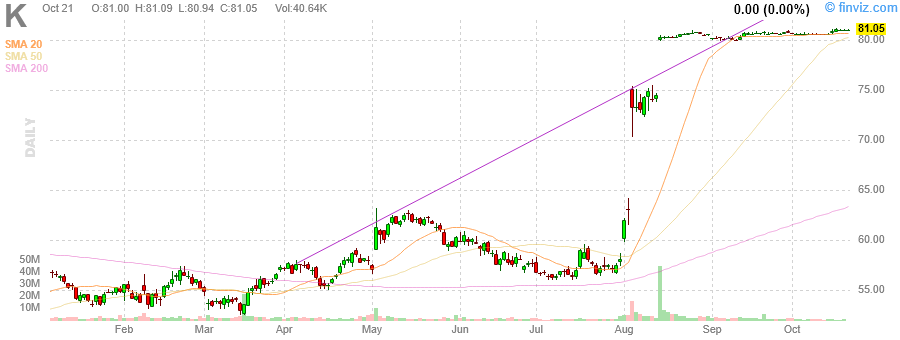From Forbes:
Food Manufacturing: Growth Requires Moving Past Tradition
In the boardroom, the pressure is on. At the Kellogg Company, CEO John Bryant is stepping down after seven years at the helm of the cereal and snack maker with declining volumes. He is passing the torch to Steven Cahillane, prior president and CEO of The Nature’s Bounty Co., a vitamin and nutritional supplement manufacturer. Dirk Van de Put, previously CEO of Canadian frozen foods manufacturer McCain Foods, is replacing Irene Rosenfeld in November 2017. Both companies seek growth in a declining packaged foods market.Figure 1. Orbit Chart of Operating Margin and Inventory Turns for the Food Industry for the Period of 2006-2016
As the food manufacturing market struggles under the battling forces of the "Amazon Effect" and the "3G Effect", there is a need for strong leadership. Neither company has the scale to deliver on a B2C model, and they do not have the leverage with the shopper that they used to. As the men pull up the chair in their new offices, they will be surrounded by frenetic marketing teams. Deep in functional silos they will find fear. The problem? Traditional marketing programs don't work so well in today's market; and unfortunately, traditional supply chain programs do not work as well either. It is time to rethink processes from the channel back. In the food industry, as shown in Figure 1, there is a steady decline in operating margin. This is despite the benefit of declining oil prices.

Their companies relative positions in the food industry based on balance sheet performance for 2010-2016 are shown in Table 1. notice the underperformance in growthTable 1. Overall Industry Performance

Both companies lack supply chain resiliency with larger swings at the intersection of inventory turns and operating margin than their competitors. This is largely driven largely by functional silos and the lack of a balanced scorecard to drive overall corporate performance. As growth slowed, performance at the intersection of costs and inventory weakened.Figure 2. Orbit Chart Showing Year-over-Year Performance for General Mills and Kellogg at the Intersection of Operating Margin and Inventory Turns

...MORE
Previously:
The David Says Eat More Packaged Food (and short the stocks)
Packaged Goods: "...America's Venerable Food Brands Are Struggling"
Nine of the World's Biggest Packaged Food Companies Have Launched Venture Capital Units
...And on to the charts of the two companies mentioned in that March 7 post:


M&A In European Food
I'm not sure that consumer packaged goods is the area to be in, at least not in the U.S. and not based on names like Kellogg or General Mills.And that gets us back to March. Of 2017. As I said, it is now a series.
For a quarter-century those manufacturers ratcheted prices as though they were tobacco companies but people find it easier to give up their Cheerios than their cigarettes.
The managements milked that approach for pretty much all it was worth so, as operating entities, they aren't all that attractive but someone will decide the only thing left to do is to asset strip or dividend recap the life out of the former cash cows....